Sheep Breeds
Here are some of the major wool sheep breeds that are known for naturally-colored wool. They are divided by the wool grade of the breeds, with the average Bradford Spinning Count and thickness by microns in each division as given.
Select Wool Type
| Picture | Breed | Wool Type | Description |
|---|---|---|---|
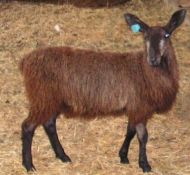 |
Bluefaced Leicester | Long | Originally from the UK and historically bred to sire “mules” in a tiered meat production scheme. Natural colored sheep are not recognized in the UK, but are proliferating in North America where the exquisite fleece is also highly prized. The sheep are larger-sized, rams at 250 pounds, ewes at 150 pounds. They carry no wool on their heads, necks, underbelly, legs, udders and scrotum. The breed is upheaded, athletically built, flock oriented. The ewes easily produce multiples with a clean, efficient udder held high and accessible. The fleece is classified as longwool, with lustrous fine locks opening cleanly to the skin, lighter weight fleeces with little waste and little grease, and a fiber diameter of 56s to 60s count or 28 to 24 microns. Using the Bluefaced Leicester ram on most any breed of ewes will result with improvements of both carcass and fleece. (long wool) |
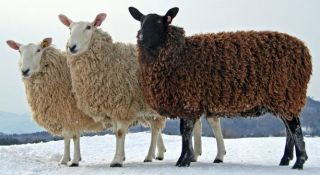 |
Border Leicesters | Long | This breed in North America have been kept primarily in small purebred flocks, but now progressive commercial breeders in increasing numbers are realizing greater profits with the breed. Border Leicesters give rapidly-growing, high-quality market lambs as well as a much sought-after specialty wool crop. The fleece weight from mature females ranges from 8 to 12 pounds with a yield of 65 to 80 percent. The staple length of the fleece ranges from five to ten inches (12.5 to 25cm) with a numeric count of 36 to 48 which is 38.5 to 30.0 microns. Mature rams weigh from 225 to 325 pounds (102 to 147 kg) and ewe weights range from 175 to 275 pounds (79 to 124 kg). (long wool) |
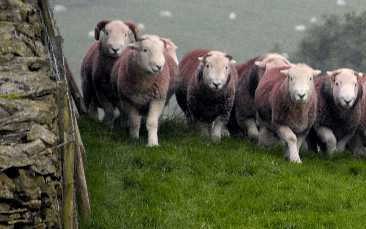 |
British Herdwick | Course | Herdwicks are a dual-purpose breed, producing strongly flavoured lamb and mutton and a coarse, grey wool. This slowly maturing breed is one of the most hardy of all the British hill sheep breeds. Herdwick lambs are born black, and after a year they lighten to a dark brown color. After the first shearing, their fleece lightens further to grey. Rams are horned, and ewes polled. (coarse wool) |
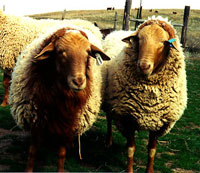 |
Californa Reds | Medium | These medium-sized sheep, the rams weighing from 200 to 250 pounds and the ewes from 110 to 140 pounds. The rams sometimes have manes and both sexes are polled. The breed is non-seasonal and can be bred for three lamb crops in two years. The lambs are born red, a color that is retained on the legs and head as mature animals. At maturity the fleeces turn a beige or oatmeal color. The legs and faces are free of wool with long pendulous ears which emphasize the animal’s appearance. The wool is silky in texture and has found a specialty market with hand spinners and weavers. The staple length is three to six inches and the wool has a Bradford count of 50 to 60. (medium wool) |
 |
California Vareigated Mutant | Fine | Their color patterns vary widely, especially in the darkness of body wool. Unlike any sheep, the CVM will not fade with age, but rather darkens from birth to their first year. With the wide variety of color patterns, including dark gray, black, brown, moorit, and spotted, not excluding the barred face badger pattern typical to the original CVMs, a breed description has been difficult. Fleece should be bright, uniform and dense, of high yielding, long staple, fine wool. Sheep will average about eight pounds of wool yearly with spinning counts from 60s to 62s quality. Twelve-month staple length averages 4 to 6 inches. (fine wool) |
 |
Columbia | Medium | While this breed was originally developed for range conditions, they have proved admirably adaptable to the lush grasses and farm flock management of the middle west, east, north and south. The mature Columbia rams weigh between 225 and 300 pounds (100 to 135 kg) and the females weigh 150 to 225 pounds (68 to 102 kg). The average fleece weight of the ewes ranges from 10 to 16 pounds (4.5 to 7.3 kg) with a yield of 45 to 55 percent. The staple length of the wool ranges from 3.5 to 5 inches (9 to 13 cm). The wool is classified as medium wool with a numeric count of 50s to 60s. The wool varies from 31.0 to 24.0 microns. (medium wool) |
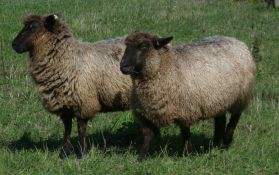 |
Coopworths | Long | Has been selected on visual criteria, wool quality, frame and carcass attributes, and measured performance, including fertility and lamb survival, growth rate to weaning, growth rate to yearling stage, leanness, and growth and fleece production of 30 to 35 micron wool. This selection program has produced an efficient dual-purpose sheep ideally suited to most environments in Australia. It is easy to care for and produces high milk yields for lamb production. (long wool) |
 |
Cormo | Fine | They were first introduced to the United States in 1976 when Travis Jones imported twelve bred ewes and two stud rams from I.K. Downie. Both carcass and wool traits are exceptional when Cormos are crossed with existing US wool sheep. The Cormo is not being promoted as a show-type sheep in the US, but rather as one of economic value. Selections within the Cormo breed is based on a set of four criteria which were determined to be commercially desirable characteristics. The criteria for selection are: clean fleece weight; fiber diameter (17 to 23 micron range); fast body growth rate, or body weight; high fertility. (fine wool) |
 |
Corriedale | Medium | This is a dual-purpose sheep. It is large-framed, polled, and with good carcass quality. Although its role has traditionally been to produce premium lambs when mated to sires of meat breeds, the Corriedale is now achieving comparative performance rates with purebred lambs. This bonus together with a high skin value secures its future as a popular breed. The Corriedale produces bulky, high-yielding wool ranging from 31.5 to 24.5 micron fiber diameter. The fleece from mature ewes will weigh from 10 to 17 pounds (4.5 to 7.7 kg) with a staple length of 3.5 to 6 inches (9 to 15 cm). (medium wool) |
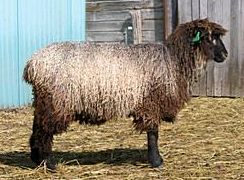 |
Cotswold | Long | Typically has a white face and white legs. A grayish-white color is not considered objectionable, and small black spots on the face or legs are not entirely unknown. They will also exhibit dark pigmentation on the skin of the nose, inside the ears and on the hooves. The Cotswold has demonstrated its greatest usefulness in crossing on flocks of ewes that lack in size, fleshing qualities, and in length of fleece. When commercial producers have mated the rams to small and short-fleeced ewes, they have been well pleased with the offspring. (long wool) |
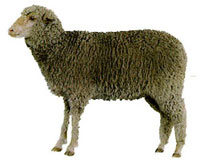 |
Debouillet | Fine | This medium-sized breed has white hair on the face and legs. It is hardy under arid conditions, gregarious, adaptable to unassisted pasture lambing and produced a high quality fine-wool fleece with a deep, close crimp. Mature ewes of this breed will range in weight from 125 to 160 pounds (57 to 73 kg) and rams will weigh from 175 to 250 pounds (79 to 113 kg). The fleece from mature ewes will weight from 10 to 18 pounds with a 35 to 50 percent yield. The stable length of the fleece is from three to five inches (7.5 to 12.5 cm) with a numerical count of 62 to 80 which is 18.5 to 23.5 microns. (fine wool) |
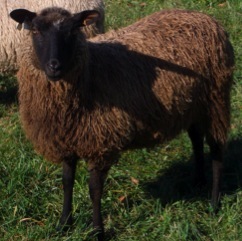 |
Finnsheep | Medium | The rams will range in weight from 150 to 200 pounds (68 to 90 kg); females are slightly lighter with a range of 120 to 190 pounds (55 to 86 kg). The fleece from a mature ewe will range in weight from four to eight pounds (1.8 to 3.6 kg) with a high yield percentage. The fleeces have a numerical count of 50 to 60 or 23.5 to 31.0 microns with a staple length of three to six inches (7.5 to 15 cm). While white is the predominate fleece color on the breed in the North America, they are found in a number of natural colors in Finnland. (medium wool) |
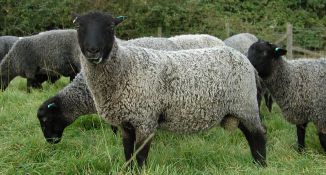 |
Gotland Sheep | Long | A medium-sized, luster long wool sheep with clean head and legs. Curious, bold, and having an alert appearance with fine bone and good breadth and depth of body. Ranging in shades of near silver to charcoal black, this breed has exploded in popularity due in part to its considerable contribution in the Lord of the Ring movie series where the fleece of Gotland sheep was woven into the magic elven cloaks. Head and legs are generally solid black. Lamb birth coat is black, becoming gray within several months. Both sexes are polled. Ewes generally weigh from 120 to 155 pounds. Rams are heavier weighing 165 to 190 pounds at mature body weight. The ideal height range for mature Gotland ewes is 25.5 to 30 inches; for mature Gotland rams is 29.5 to 32 inches at the withers. Fleece is fine, long, lustrous, and dense, with clearly defined curl and staple, and soft to the touch. It is typically 29 to 34 microns in diameter at 18 months of age, as measured midside at the last rib. Lamb’s wool is typically in the low to mid 20s micron range. (long wool) |
 |
Icelandic | Course | Medium sized with mature ewes weighing 150 to 160 pounds. and rams 200 to 220 pounds. They are fine-boned with open face, legs, and udders. The breed has both polled and horned individuals of both sexes but it is primarily horned. Icelandic sheep are not particularly tall, but broad and have an excellent conformation as a meat breed. The fleece has an inner and outer coat typical of the more primitive breeds, with the fine, downy undercoat being called thel and the long, coarser outercoat called tog. The fleeces are open and not very greasy. The average fleece weighs 4 to 5 pounds in grease. Due to the length of fiber, the openness of the wool, the natural colors and the versatility, fleeces are usually sold through specialty markets to handspinners. (coarse wool) |
 |
Jacob | Medium | This is an unique breed in America. Slight of build, with the narrow, lean carcass typical of some of the ancient British breeds, they are immediately noticeable due to their black and white fleeces and prominent horns. The Jacob fleece, which is properly described as white with black spots, is prized by handspinners and weavers. The white and the black wool, which may fade at the tips to dark brown, can be blended to various shades of greys. The wool is of medium grade, and interestingly, the black wool, which grows out of black skin, frequently is shorter than the white wool, which grows from white skin. (medium wool) |
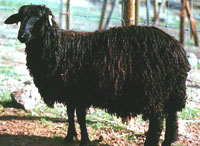 |
Karakul | Course | A rare breed in the US and most likely will remain so; current population is estimated at 1300 animals. All current US stock is descended from the original importation and the importation of new bloodlines is restricted by government regulations. The goal is to upgrade the current stock with selective breeding, to a Karakul of pure type. The Karakul is distinguished by its colored fleece, which is due to a dominate black gene. Most lambs are born coal black with lustrous wavy curls, with the face, ears, and legs usually showing smooth, sleek hair. As the lamb grows, the curls opens and loses its pattern and the color generally begins to turn brownish or bluish gray, getting grayer with age. (coarse wool) |
 |
Leicester Long Wool | Long | (English Leicester) An important foundation longwool breed. Its history is directly linked to the creation of many of the other longwool breeds. They have distinctive wool characteristics which include long, curly, lustrous, and very strong locks. The staple lengths range from 8 to 14 inches and are high-yielding and stylish wool with well-defined crimp. The colored sheep do occur and can range from black to “English Blue” (deep gray to silver) and are able to be registered as purebred. The wool is generally softer and somewhat finer than the Lincoln or Cotswold. The rams were designed to be used as crossing sires to improve wool clip and meat quality on any sheep breed. There are efforts to restore the total flock numbers that are now reaching 2500 worldwide, and 400 in America, as of 2008. A more detail description of breed characteristics can be found at the US Leicester Longwool Sheep Breeders Association website: www.leicesterlongwool.org. (long wool) |
 |
Lincoln | Long | Usually referred to as the world’s largest breed of sheep. There is little question that the breed is entitled to this distinction because the average weights of the breed are in excess of those of other breeds, although a few individuals of other breeds may sometimes equal their weights. Mature Lincoln rams should weigh from 250 to 350 pounds (113 to 160 kg), and mature ewes will range in weight from 200 to 250 pounds (90 to 113 kg). Lincolns are rather rectangular in form, are deep bodied, and show great width. They are straight and strong in the back and cover thickly as mature sheep. (long wool) |
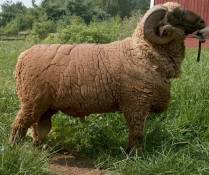 |
Merino | Fine | primarily grown for wool production, although improved carcass quality gives this breed a dual purpose. Their wool is almost totally absorbed by the textile trade, in particular high-quality apparel wool. The strain is large-framed and relatively plain-bodied, producing a heavy fleece which is soft-handling and of good color, with a fiber diameter of 20 to 22 microns. Staple length is approximately 90 mm / 3.5 inches. Merino is also a favorite of handspinners for its soft handle. (fine wool) |
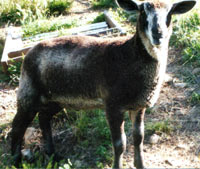 |
Montadales | Medium | An extremely hardy medium-sized white-faced meat breed. The rams are aggressive breeders and the ewes are easy lambers. Montadale-sired lambs, both purebred and crossbred, are vigorous at birth and usually up nursing within ten minutes. Montadale rams are: “Rugged, Regal, and Ready”. Montadale rams have proven themselves as terminal sires and “Replacement Reproducer Rams”. (medium wool) |
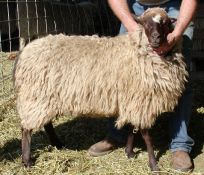 |
Navajo Churro | Course | These sheep with their long staple of protective top coat and soft undercoat are well suited to extremes of climate. Some rams have four fully-developed horns, a trait shared by few other breeds of the world. The Navajo-Churro is highly resistant to disease, and although it responds to individual attention, it needs no pampering to survive and prosper. The ewes lamb easily and are fiercely protective. Twins and triplets are not uncommon. The flavor of the meat is incomparably superior, with a surprisingly low fat content. (coarse wool) |
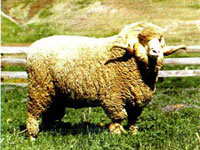 |
Rambouillet | Fine | The rams weigh between 250 and 300 pounds (113 to 135 kg), while ewes range from 150 to 200 pounds (68 to 90 kg). Mature ewes will have a fleece weigh of 8 to 18 pounds (3.6 to 8.1 kg) with a yield of 35 to 55 percent. The fleece staple length will vary from two to four inches (5 to 10 cm) and range in fiber diameter from 18.5 to 24.5 microns or 60 to 80 for the numerical count. (fine wool) |
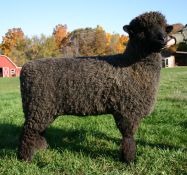 |
Romney | Long | Historically a dual-purpose breed, remains so today, and is found in every type of farming environment. When handled properly, lambs from this versatile sheep can be creep fed until weaning, then turned out on pasture to mature, where they efficiently convert pasture into lean, high-quality carcasses of heavy hanging weights that usually grade prime or choice. Romney meat is known for its delicate taste even in older lambs. The Romney fleece is unique among all breeds of sheep in the way it combines several important traits. The fleece is lustrous and hangs in separate locks, with minimal cross fibers between the locks. It is also high-yielding and easily spun. Uniformity of crimp from the butt to the tip of a lock is also typical of the breed. (long wool) |
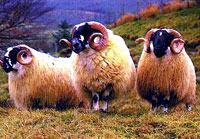 |
Scottish Black Faced | Course | Overseas, Scottish Blackface wool is used in the production of fine carpets. It has exceptionally hardwearing qualities combined with a natural springiness that enables the pile of carpet made from it to resist tread marks and to regain its upright position even after the prolonged pressure of heavy furniture. Some grades of Scottish Blackface wool are used in the manufacture of Scottish and Irish tweeds. Other grades are exported in considerable quantities to Italy where the wool is greatly prized for filling mattresses. In the US, the fleeces are becoming of interest to fiber artists and hand spinners for use in tapestry and the making of rugs and saddle blankets. (coarse wool) |
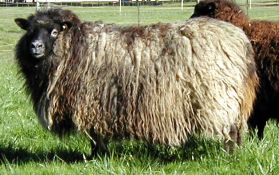 |
Shetland | Medium | This breed comes in one of the widest ranges of colors of any breed. Besides white, the sheep produce several shades of wool including moorit (reddish brown), shaela (silvery grey), fawn, grey, dark brown, and black. They are often patterned such as krunet (white crown), katmoget (dark belly), and gulmoget (light underneath). There are 11 main colors as well as 30 markings, many still bearing their Shetland dialect names. Unfortunately, many of these colors and markings have become quite rare as white wool has historically commanded better prices. The wool has a Bradford count usually in the upper 50s to lower 60s and a fiber diameter range of 20 to 25 microns. Fleeces usually weigh between 2 and 4 pounds (1 to 1.5 kg) and have a staple length of 2 to 4.5 inches (50 to 120mm). (medium wool) |
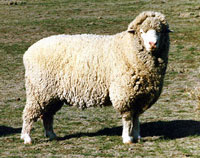 |
Targhee | Fine | The mature body weight in the rams is 200 to 300 pounds (90 to 135 kg) with the ewes weighing slightly less at 125 to 200 pounds (56 to 90 kg). Each ewe will average a 10 to 14 pound (4.5 to 6.3 kg) fleece that has a micron measurement of 25 to 21 and a spinning count of 64 to 58. The staple length of the fleece will be 3 to 5 inches (7.5 to 11 cm) with a yield of 50 to 55 percent. (fine wool) |
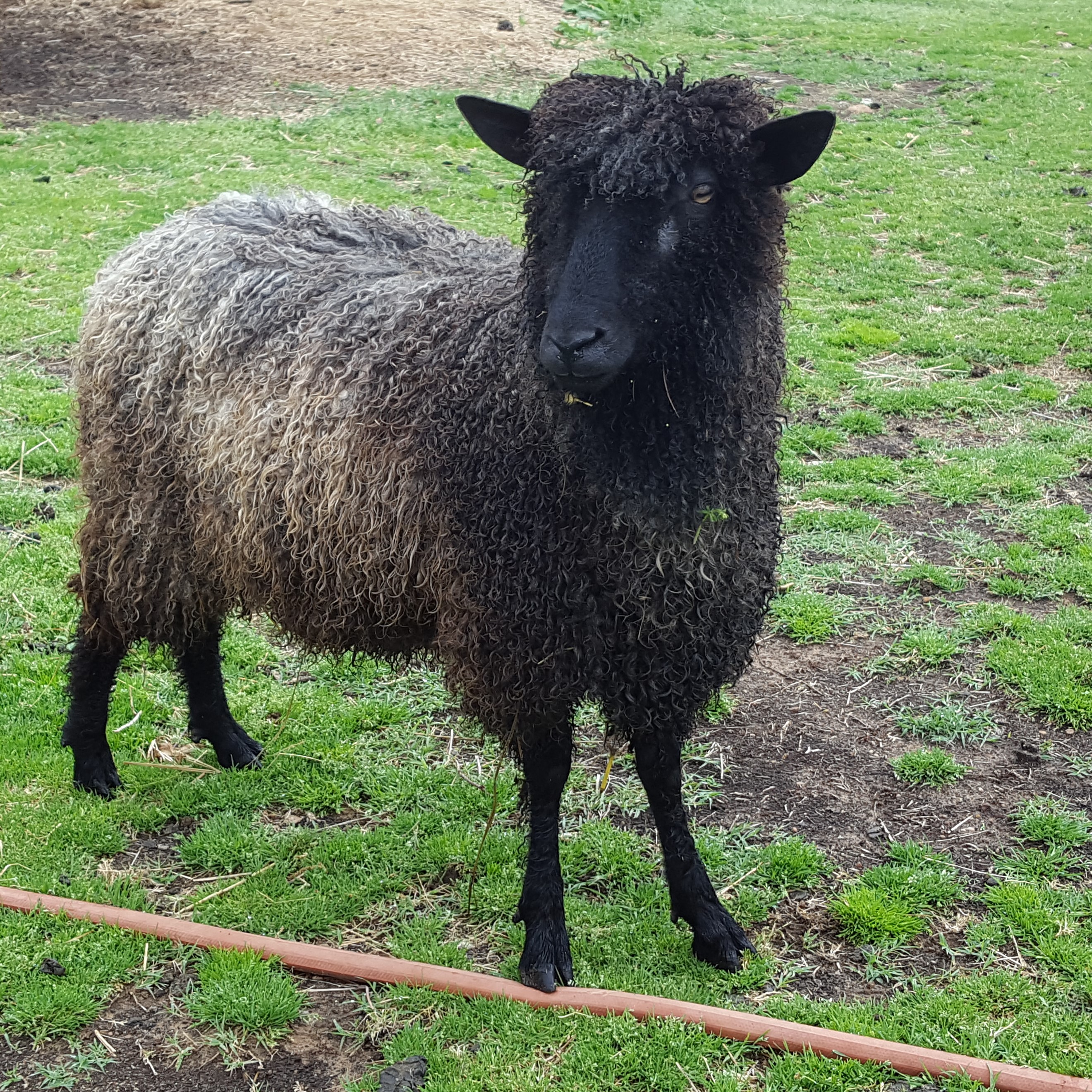 |
Wensleydale | Long | A very large longwool sheep, described by the British Meat and Livestock Commission as “probably the heaviest of all our indigenous breeds.” It is a visually striking sheep with considerable presence. It has a bold and alert carriage which is accentuated by its broad, level back, and heavy muscling in the hindquarters. It has a distinctive deep blue head and ears, which should be clean except for a well developed forelock of wool. Both sexes are polled. Mature weight: rams, 300 pounds; ewes, 250 pounds. Micron count 33 to 35, Staple length 8 to 12 inches, Yearling Fleece Weight 13 to 20 pounds. Fleeces are entirely kemp-free as a result of the unique characteristics of the wool-producing follicles. This special quality is genetically transmitted to cross-bred lambs, characterizing the Wensleydale ram as perhaps the leading wool-improving sire in the world. Wensleydale wool is used for its special effects and handle in hand knitting yarn, knitwear and cloth, and sometimes in upholstery fabrics. Because of its similarity, it is regularly used to blend with mohair. (long wool) |
Wool Types
Wool grades are determined by the average Bradford Spinning Count and thickness by microns.
Fine Wool – Bradford count 60 and higher, 24.94 microns and below.
Medium Wool – Bradford count 50 to 58, 24.95 to 30.99 microns.
Long Wool – Bradford count 38 to 48, 31.00 to 38.09 microns.
Coarse Wool – Bradford count 36 and below, 38.10 microns and higher.